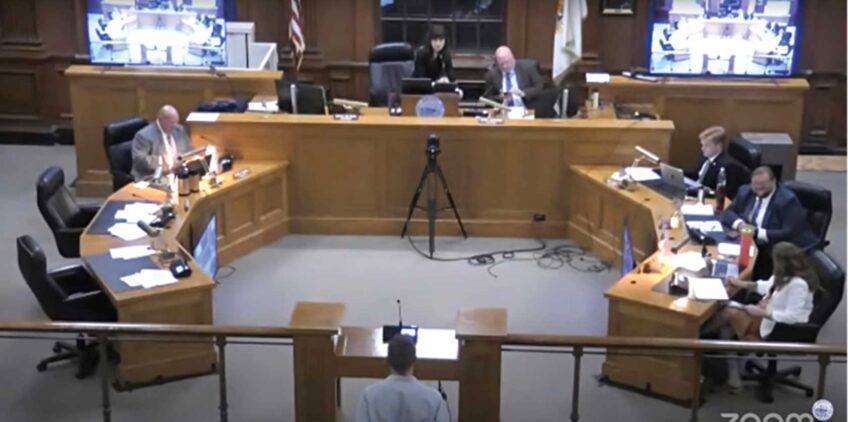Economic hopes pinned on vacant Roxbury parcel
Large employer could bring permanent jobs

As Roxbury’s largest vacant lot appears finally set to be developed, community leaders anticipate big employers will cross Melnea Cass Boulevard. Neighborhood residents have for decades envisioned plentiful, good-paying jobs close to home.
But economic jitters — coronavirus, then inflation and war — are playing a role in shaping negotiations on the parcel, known as P3. The developer has yet to identify large employers. Without the addition of permanent jobs, Roxbury’s residents argue, Boston will be breaking old promises again.
When no anchor employer signed up for the plot connecting Ruggles Station to Nubian Square, an earlier developer team, Elma Lewis Partners, lost their chance to build. A financial crisis at the time did not help.
Now, Roxbury is relying on its oldest nonprofit community development corporation, Madison Park, which teamed up with My City at Peace and HYM Investment Group. Experts say this set of developers is prepared to deliver. Their proposal predicts 2,710 total permanent jobs, predominantly in life sciences.
But if big businesses stay away, public benefits may be limited to additional affordable housing and workforce training.
From an office overlooking the parcel, Ted Landsmark can see activity on the unfinished site. The Northeastern professor of public policy and urban affairs has served on the board of the city’s planning and development agency since 2017. During his tenure, $70 billion in projects have been approved.
Describing the planning agency as a facilitator for neighborhood reviews of developers’ plans, he framed its work as seeking a “balance between the attractiveness of having commercial developers in downtown build in ways that generate substantial new tax revenues for the city, and the need to have more affordable housing built across the city.”
When Landsmark moved to Boston in 1973, federally financed urban renewal was winding down. Since then, attempts to innovate solutions have produced capable community development corporations, minority contractors, a community land trust along Dudley Street and mechanisms for community input on new projects.
Landsmark cited a more diverse construction sector as a valuable outcome of Boston’s development history. He hopes these community builders can eventually steer Roxbury’s development towards a community vision.
Community oversight
Under then-Mayor Ray Flynn, the Boston Redevelopment Authority (BRA) in 1990 negotiated an agreement to formally recognize a community group’s authority in development projects, the Roxbury Neighborhood Council.
Flynn’s successor, Thomas M. Menino, further vested community groups with official authority through the Roxbury Strategic Master Plan, published in 2004.

Architect David Lee PHOTO: COURTESY DAVID LEE
The master plan’s author, architect David Lee, envisioned an oversight committee to dispose of Roxbury’s remaining vacant public parcels.
“We wanted to empower the oversight committee to literally provide oversight to development in [the] community,” Lee said, “but that means when you go in with a project, you’ve got to get past those guys.”
“Developers don’t care that there are rules,” he continued. “They just want to know what the rules are and that everybody is playing by the same set of rules.”
The Master Plan imagines economic revitalization of the area’s historic business hubs. One aim is a “diverse economy focused on job opportunities.”
Landsmark said the relocation of the Orange Line from Washington Street hurt small businesses in what is now called Nubian Square.
“One need only look at the reduced economic vitality of Dudley/Nubian Square in relation to Upham’s Corner or Brigham Circle as one of the unintended consequences of the relocation of some of the transit services going through the center of Roxbury,” he said.
Proximity and access to better-paying employment would increase overall income levels, positioning more Roxbury residents to afford market-rate housing and have money to spend in neighborhood businesses.
Too much affordable housing?
Lorraine Wheeler, who represents residents on the Roxbury Strategic Master Plan Oversight Committee, says Roxbury is over-saturated with affordable housing and rental units, reducing spending in Roxbury’s small businesses.
The Master Plan reflects that, stating, “the high number of subsidized units has caused some residents to advocate for a greater balance of incomes in Roxbury and for an increase in homeownership, both affordable and market rate.”
Last year, City Councilor Tania Fernandes Anderson, who represents Roxbury, called on other neighborhoods to host affordable housing.
Louis Elisa, a Roxbury community leader and former planner, lamented private redevelopers who buy out long-term residents and further subdivide units.
“They decide to cut up the building, so a two-family or three-family house becomes six families,” he said.
Elisa likened Roxbury to tenement housing in New York City, where over-concentration of poverty created decades of social problems.
Connie Forbes, president of the Roxbury Neighborhood Council, said, “We are seeing apartments that are being built that are not human-friendly; they are not family-friendly. You can’t have kids in a building with no place to go.”
Forbes framed lax zoning enforcement as an equity issue. Some older homeowners sold and moved after learning of zoning limits on their property.
New developers armed with variances “develop whatever they want — nine, 10, 12, 14 units of housing on the same spot that the original owner was told they can only build three units,” she said.
The Roxbury Strategic Master Plan was written as a 10- to 20-year framework. When its large public parcels are disposed, its institutional importance will sunset.
“Given all the demographic changes in the neighborhoods we are discussing, and the fact that development is on something of a pause because of interest rates, we have a moment where we can be a bit reflective in ways that enable us to think about how we might have learned from any missteps or mistakes that took place in the past,” Landsmark said.






